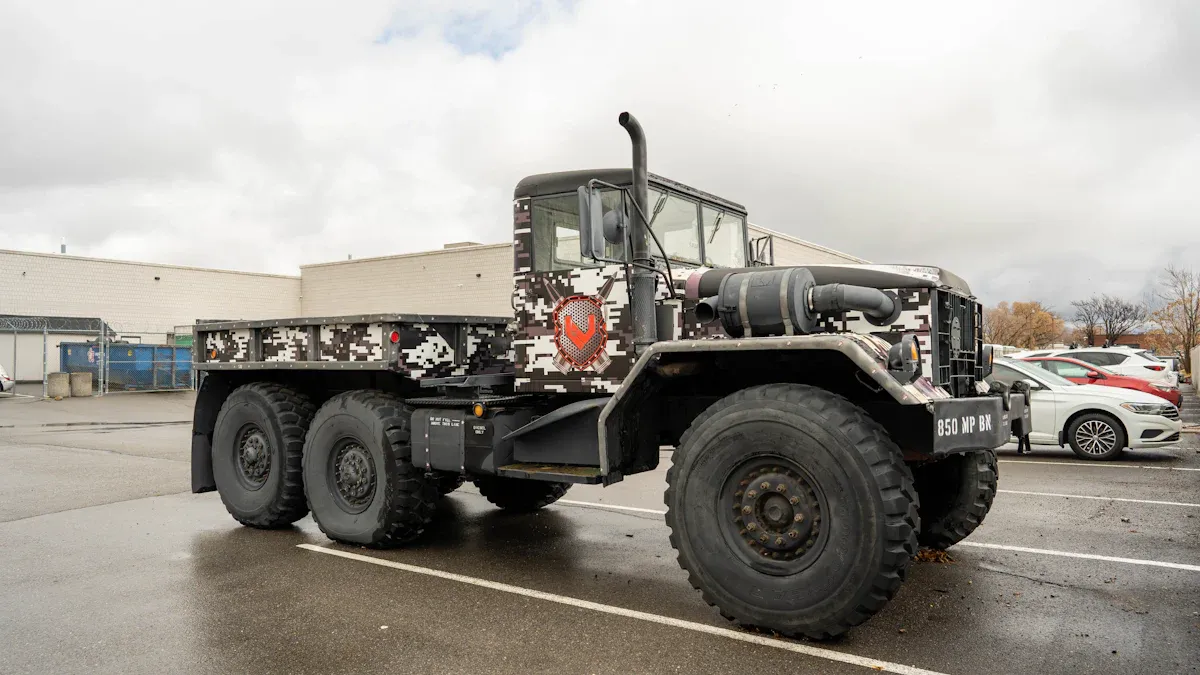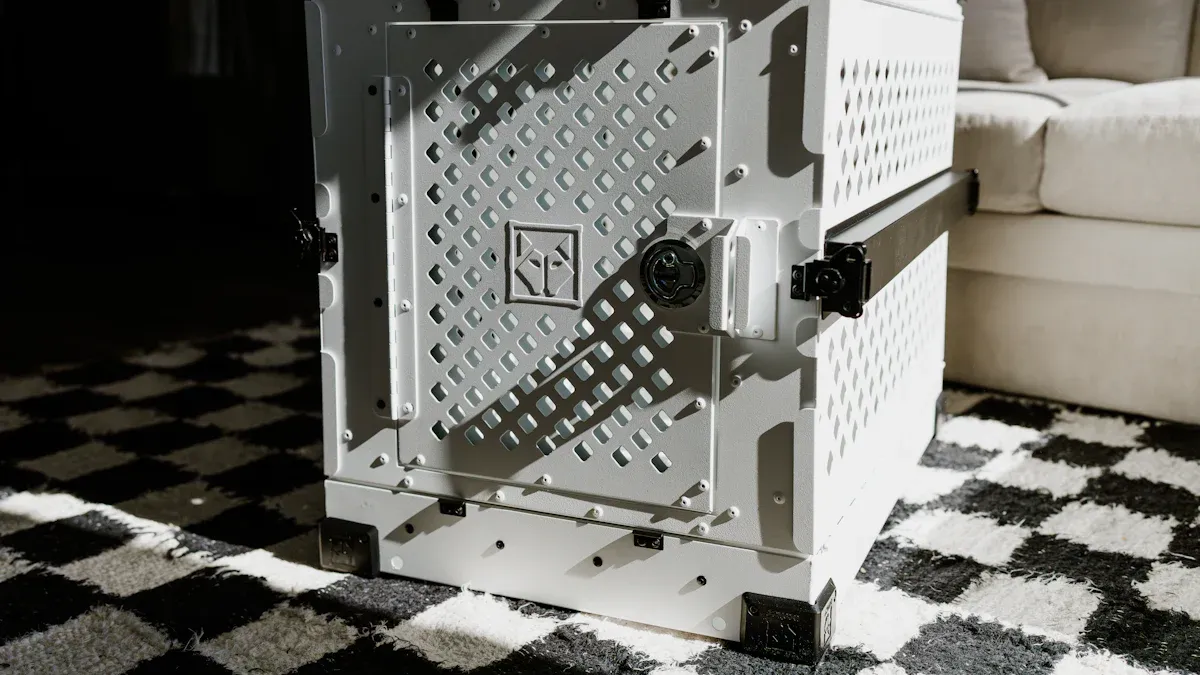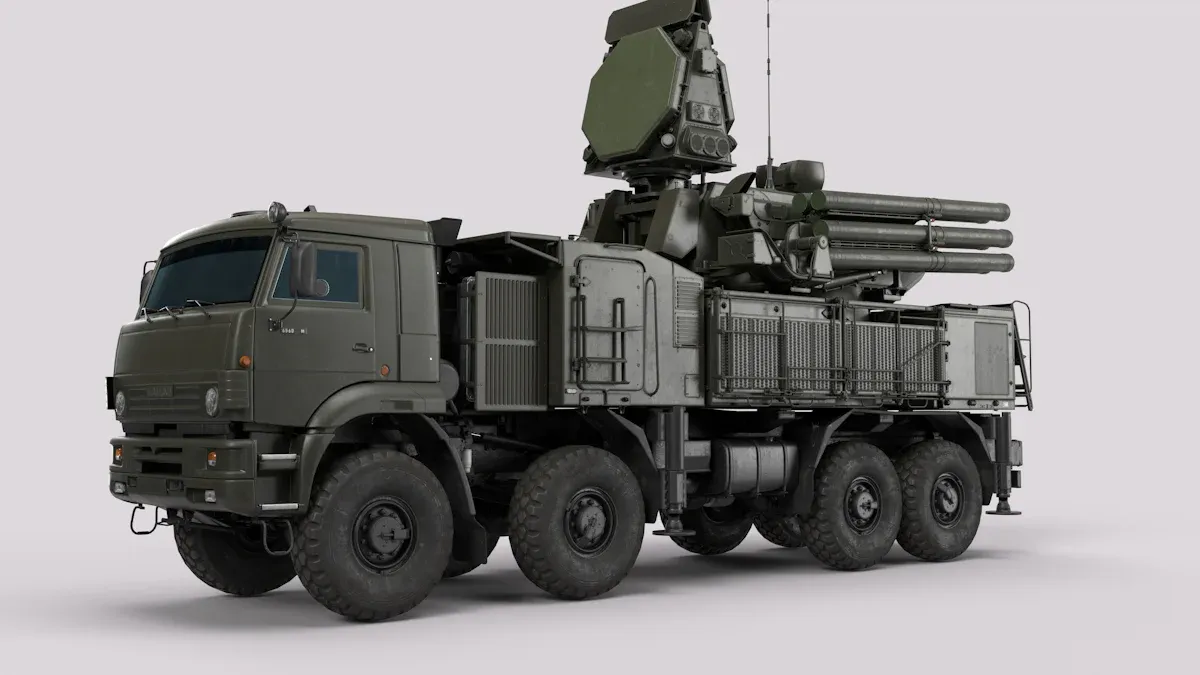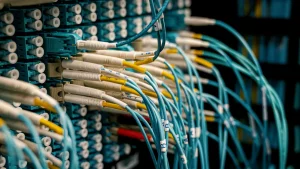
Military operations depend on uninterrupted power to sustain critical systems. 전력 분배 장치 ensure consistent energy flow to equipment, minimizing risks during missions. These units withstand harsh environments, providing reliability in scenarios where failure is not an option. Their rugged design meets defense demands, supporting operational success across diverse conditions.
주요 테이크 아웃
- Military-grade Power Units (PDUs) provide steady power for defense tasks.
- They are tough and work in bad conditions like heat or cold.
- These units meet military rules, ensuring they last and work well.
Understanding Military-Grade Power Distribution Units
Definition and purpose
Military-grade Power Distribution Units (PDUs) are specialized devices designed to manage and distribute electrical power efficiently in defense environments. These units ensure a stable power supply to critical systems, even under extreme conditions. Their robust construction and advanced features make them indispensable for military operations, where reliability and durability are paramount.
Different types of PDUs cater to specific operational needs, as shown below:
| PDU의 유형 | 설명 |
|---|---|
| Rack Mount PDUs | Designed for integration into server racks, providing centralized power for tactical communication systems and data servers. |
| Portable PDUs | Lightweight and compact units for remote deployment, ensuring stable power for field medical equipment and command stations. |
| Fixed-Installation PDUs | Built for permanent deployment in command centers and naval vessels, delivering high-capacity power and advanced monitoring capabilities. |
| Tactical Power Distribution | Optimized for mobile setups, supporting radar systems and tactical unmanned systems with a focus on durability and modularity. |
| Rugged Features | Includes durable enclosures, sealing technologies, shock resistance, and EMI shielding to withstand harsh environments. |
These PDUs are engineered to meet the unique demands of military applications, ensuring operational success in diverse scenarios.
Key applications in defense operations
전력 분배 장치 play a vital role in various defense operations. They provide reliable power to communication systems, radar installations, and unmanned vehicles. In field hospitals, portable PDUs ensure uninterrupted power for life-saving medical equipment. Fixed-installation PDUs support command centers and naval vessels, enabling seamless operation of mission-critical systems. Tactical PDUs, with their modular designs, are ideal for mobile setups, ensuring flexibility and adaptability in dynamic environments.
Importance of power reliability in mission-critical scenarios
In military operations, power reliability directly impacts mission success. A failure in power distribution can disrupt communication, compromise surveillance, or disable essential equipment. Military-grade PDUs mitigate these risks by delivering consistent and stable power, even in harsh conditions. Their rugged design ensures uninterrupted performance during extreme temperatures, vibrations, and electromagnetic interference. By maintaining power reliability, these units safeguard the functionality of critical systems, enhancing operational efficiency and mission readiness.
Features That Make Military-Grade Power Distribution Units Rugged

Durability in extreme conditions
Military-grade Power Distribution Units are engineered to endure the most challenging environments. These units are built with high-strength materials, such as reinforced aluminum or stainless steel, to resist physical damage. Their rugged construction allows them to withstand impacts, vibrations, and shocks that occur during transportation or deployment in combat zones. For instance, these units often feature shock-absorbing mounts and reinforced enclosures to protect internal components from mechanical stress.
Temperature extremes also pose significant challenges in military operations. Military-grade units are designed to operate reliably in a wide temperature range, from freezing arctic conditions to scorching desert heat. Thermal management systems, such as heat sinks and cooling fans, ensure that these units maintain optimal performance even under prolonged use. This durability ensures that mission-critical systems remain operational, regardless of environmental stressors.
Environmental resistance (waterproofing, dustproofing, corrosion resistance)
In defense operations, environmental factors like water, dust, and corrosive elements can compromise equipment functionality. Military-grade Power Distribution Units incorporate advanced sealing technologies to prevent such damage. These units are often rated according to the Ingress Protection (IP) standard, which measures their resistance to solid objects and liquids. The table below highlights common IP ratings and their protective capabilities:
| IP Rating | Protection Against Solid Objects | Protection Against Water |
|---|---|---|
| IP67 | Dust tight | Immersion up to 1 m |
| IP68 | Dust tight | Immersion beyond 1 m |
| IP69 | Dust tight | High-pressure and temperature water jets |
These ratings demonstrate the ability of military-grade units to function in wet, dusty, or high-pressure environments. Additionally, corrosion-resistant coatings, such as anodized finishes or marine-grade paints, protect the units from rust and chemical exposure. This environmental resilience ensures long-term reliability, even in maritime or desert deployments.
Advanced power management and safety features
Modern military-grade Power Distribution Units integrate advanced power management systems to optimize energy use and enhance safety. These systems include load balancing, which distributes power evenly across connected devices to prevent overloading. Voltage regulation features maintain a stable power supply, protecting sensitive equipment from fluctuations or surges.
Safety is a top priority in military operations. These units often include built-in circuit breakers, surge protectors, and ground fault interrupters to minimize the risk of electrical hazards. Some models also feature remote monitoring capabilities, allowing operators to track power usage and system health in real time. This proactive approach to power management reduces downtime and ensures that critical systems remain operational during missions.
Compliance with Military Standards
Military-grade Power Distribution Units must adhere to stringent military standards to ensure reliability and performance in demanding environments. These standards validate their durability, electromagnetic compatibility, and overall operational integrity, making them suitable for mission-critical applications.
MIL-STD-810 for durability
MIL-STD-810 evaluates the durability of equipment under environmental stresses encountered during military operations. This standard tests products against conditions such as extreme temperatures, humidity, shock, and vibration. For example, Power Distribution Units undergo rigorous vibration tests to ensure they can withstand transport over rough terrain. They are also subjected to thermal cycling to confirm functionality in both freezing and scorching conditions.
By meeting MIL-STD-810 requirements, these units demonstrate their ability to perform reliably in diverse and challenging environments. This ensures that critical systems remain operational, regardless of the physical stresses encountered during deployment.
MIL-STD-461 for electromagnetic compatibility
MIL-STD-461 establishes requirements for controlling electromagnetic interference (EMI) and ensuring electromagnetic compatibility (EMC) among military equipment. Power Distribution Units must comply with this standard to prevent interference with other electronic systems operating in close proximity. This is particularly important in environments where multiple devices share limited space, such as command centers or aircraft.
The table below outlines key test procedures under MIL-STD-461 and their significance:
| Test Procedure | 설명 |
|---|---|
| CE101 | Covers conducted emissions related to power leads, ensuring emissions do not exceed specified limits. |
| CE102 | Ensures EM emissions from equipment do not exceed limits for power leads and AC/DC outlined in MIL-STD-461. |
| CS101 | Verifies the ability of equipment to withstand signals on input power leads without malfunctioning. |
These tests confirm that Power Distribution Units can operate without causing or being affected by electromagnetic interference. This compliance ensures seamless operation of all interconnected systems, enhancing mission success.
Other relevant standards and their significance
In addition to MIL-STD-810 and MIL-STD-461, other military standards play a crucial role in ensuring the performance and reliability of Power Distribution Units. The table below highlights some of these standards and their significance:
| Military Standard | 설명 | Significance |
|---|---|---|
| MIL-STD-704 | Defines characteristics of aircraft power systems. | Ensures compatibility and operational reliability in aircraft. |
| MIL-STD-1275 | Specifies operation under voltage transients. | Guarantees clean and regulated power supply for ground vehicles. |
| MIL-STD-810 | Addresses environmental stresses on products. | Ensures performance in extreme conditions. |
| MIL-STD-461 | Establishes EMI and EMC requirements. | Ensures satisfactory performance of all equipment within a system. |
These standards collectively ensure that Power Distribution Units meet the rigorous demands of military operations. They validate the units’ ability to function reliably across various platforms, including aircraft, ground vehicles, and naval vessels. Compliance with these standards not only enhances operational efficiency but also ensures long-term value for defense contracts.
Benefits of Military-Grade Power Distribution Units in Defense Contracts

Enhanced operational efficiency
Military-grade Power Distribution Units enhance operational efficiency by ensuring a stable and uninterrupted power supply. These units streamline energy distribution, allowing critical systems to function without interruption. Their advanced power management features, such as load balancing and voltage regulation, optimize energy usage across devices. This reduces energy waste and ensures that all connected equipment operates at peak performance. By maintaining consistent power delivery, these units enable defense teams to focus on mission objectives without worrying about power disruptions.
Reduced downtime and maintenance
The rugged design of military-grade Power Distribution Units minimizes downtime and maintenance requirements. Their durable construction and environmental resistance protect them from damage caused by harsh conditions, such as extreme temperatures or exposure to water and dust. Built-in safety features, including surge protection and circuit breakers, prevent electrical failures that could lead to costly repairs. Additionally, remote monitoring capabilities allow operators to identify and address potential issues before they escalate. This proactive approach reduces the likelihood of system failures, ensuring continuous operation during critical missions.
Long-term value and compliance with contract requirements
Investing in military-grade Power Distribution Units provides long-term value for defense contracts. These units are built to meet stringent military standards, ensuring reliability and compatibility with various platforms. Their durability and low maintenance needs translate to reduced lifecycle costs, making them a cost-effective solution for defense operations. Furthermore, their compliance with standards like MIL-STD-810 and MIL-STD-461 ensures they meet contractual obligations, providing peace of mind to defense contractors. This combination of reliability, cost efficiency, and compliance makes these units an essential component of any defense strategy.
Military-grade power distribution units play a pivotal role in defense operations. Their rugged durability, intelligent monitoring, and compliance with military standards ensure mission success.
| 주요 기능 | Applications in Military Settings |
|---|---|
| Reliable and efficient power management | Command centers and communication systems |
| Rugged durability for harsh environments | Unmanned systems and robotics |
| Intelligent monitoring | Field medical equipment |
| 서지 보호 | Tactical weapon systems |
| Automatic voltage regulation | 전방 운영 기지의 에너지 생태계 |
운영 요구에 맞게 조정 된 올바른 장치를 선택하면 신뢰성, 효율성 및 장기 가치가 보장됩니다.
FAQ
군사 등급 PDU를 상업용 단위와 다르게 만드는 것은 무엇입니까?
군용 PDU는 견고한 건설, 고급 전력 관리 및 엄격한 군사 표준 준수를 특징으로합니다. 이러한 속성은 극단적 인 환경과 미션 크리티컬 시나리오에서의 신뢰성을 보장합니다.
군용 PDU가 특정 응용 프로그램에 대해 사용자 정의 할 수 있습니까?
예, 제조업체는 사용자 정의 옵션을 제공합니다. 여기에는 맞춤형 전력 용량, 모듈 식 설계 및 고유 한 운영 요구 사항을 충족하기위한 원격 모니터링과 같은 추가 기능이 포함됩니다.
군사 등급 PDU는 운영 중에 안전을 어떻게 보장합니까?
이 장치는 서지 보호, 회로 차단기 및 전압 조절과 같은 안전 기능을 통합합니다. 이러한 조치는 전기 위험을 예방하고 연결된 장비가 손상되지 않도록 보호합니다.



